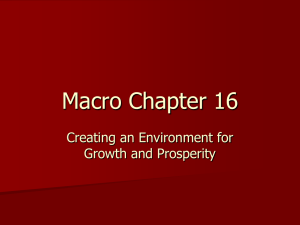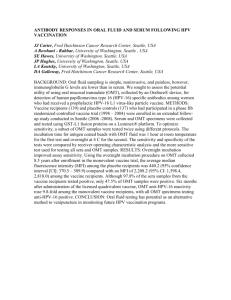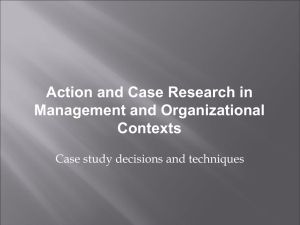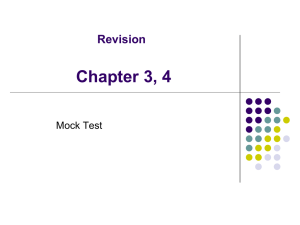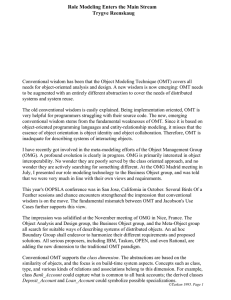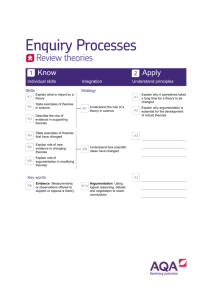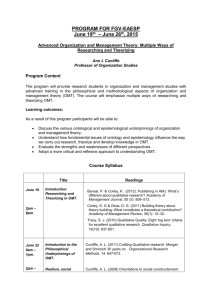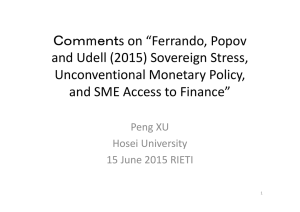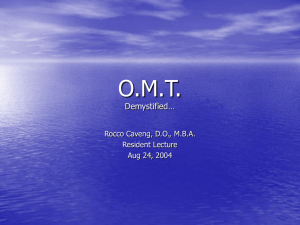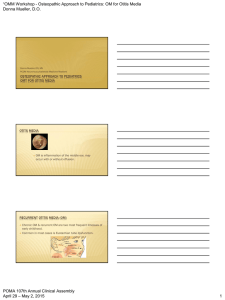Advanced Organization Theory Management 6381 – Sec 01 Ph.D
advertisement
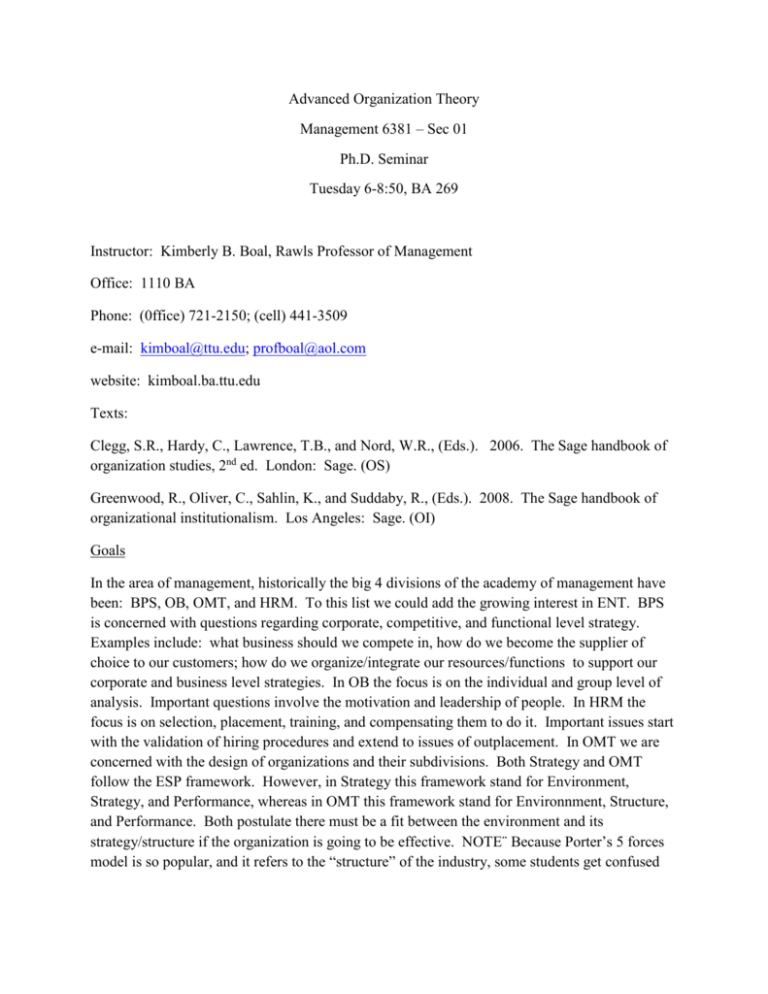
Advanced Organization Theory Management 6381 – Sec 01 Ph.D. Seminar Tuesday 6-8:50, BA 269 Instructor: Kimberly B. Boal, Rawls Professor of Management Office: 1110 BA Phone: (0ffice) 721-2150; (cell) 441-3509 e-mail: kimboal@ttu.edu; profboal@aol.com website: kimboal.ba.ttu.edu Texts: Clegg, S.R., Hardy, C., Lawrence, T.B., and Nord, W.R., (Eds.). 2006. The Sage handbook of organization studies, 2nd ed. London: Sage. (OS) Greenwood, R., Oliver, C., Sahlin, K., and Suddaby, R., (Eds.). 2008. The Sage handbook of organizational institutionalism. Los Angeles: Sage. (OI) Goals In the area of management, historically the big 4 divisions of the academy of management have been: BPS, OB, OMT, and HRM. To this list we could add the growing interest in ENT. BPS is concerned with questions regarding corporate, competitive, and functional level strategy. Examples include: what business should we compete in, how do we become the supplier of choice to our customers; how do we organize/integrate our resources/functions to support our corporate and business level strategies. In OB the focus is on the individual and group level of analysis. Important questions involve the motivation and leadership of people. In HRM the focus is on selection, placement, training, and compensating them to do it. Important issues start with the validation of hiring procedures and extend to issues of outplacement. In OMT we are concerned with the design of organizations and their subdivisions. Both Strategy and OMT follow the ESP framework. However, in Strategy this framework stand for Environment, Strategy, and Performance, whereas in OMT this framework stand for Environnment, Structure, and Performance. Both postulate there must be a fit between the environment and its strategy/structure if the organization is going to be effective. NOTE¨ Because Porter’s 5 forces model is so popular, and it refers to the “structure” of the industry, some students get confused when talking about “structure.” The structure we refer to in this course is the organization’s structure, and not the economic structure of the industry. Now there are many theories that we could look at. A sampling would include: Contingency theory, resource dependence theory, agency theory, symbolic interaction theory, network theory, population ecology, and institutional theory. However, we will not give all of these theories an equal look in this course. This is because, in the opinion of your instructor, not all of these theories are of the moment. By this, I mean, if one were to pick up a current random issue of ASQ, Organization Science, JMS, or Organizational Studies not all the fore mentioned theories would have an equal probability of being mentioned. For example, in the 1970s contingency theory reined, the Population Ecology in the 1990s, and today Institutional Theory dominates. Thus, I have chosen two books that I think you will need on your bookshelf as references if you wish to do any work in OMT. We will not re4ad either book in its entirety, but sample 10 chapters from each. There are two ways to read each chapter. The traditional way is to ask you to think about the theory in question as theory. That is to say, what are the fundamental propositions of the theory, what is the level of analysis, what are its fundamental predictions, and how well is it supported. I want you to read the chapters in this way. However, I want you to read them in a different way as well. I want you to ask yourselves the following questions: Does this theory address why organizations exist in the first place? Does this theory answer the question about why only some survive? Does this theory explain why or why not organizations differ? Does this theory address why and how organizations change? Does this theory address new, and emergent issues facing organizations in the 21st century? If you can accomplish these two ways of understanding, then I believe you will have a sophisticated understanding of the central issues in OMT. Assessment Course Work: 50% There are two assessments I will make. The first is how much effort, thought, and insight did you bring to each weeks reading assignments. While I will ask one student to lead the discussion of each chapter (2 students per week for two chapters), and this student should prepare handouts to guide us through the chapter, examples would include, relevance to the issues discussed in the two ways to read each chapter discussed above, everyone is expected to be able to discuss the issues. Sometimes, your instructor will ask specific students for their input lest some voices become to dominate. Each time you are asked to lead the discussion, you will have approximately 1 hour to do so. As time goes by, all students should be able to reflect on previous readings to look for points of agreement/contention/integration. Paper: 50% Students are to prepare an empirical/theoretical paper that touches on one or more of the theories presented in the class. However, students are allowed to work with each other or a faculty member on the paper. But there must be clear evidence of each student’s contribution. Contributions may be in the form of a written testimony by the student’s co-author. If a student is working on a paper that has already progressed to some state, (say an earlier version was presented at the AOM), the student’s paper must be able to take it to the next level, (say, receiving an R&R from a major journal). If the paper is a new paper, it should be written in such a way that it would be acceptable to AMR/AMJ. In your career as Professors, you will be ask to profess in writing as well as the classroom. The two assessments in this course are meant to prepare you to do both. Readings January 19 Get acquainted and course syllabus January 26 OS Chapter 1.1 Organizational theorizing:… OI Chapter 4 Organizational fields:… February 2 OS Chapter 2.6 Beyond Contingency:… OI Chapter 24 Ecologist and institutionalist:... February 9 OS Chapter 1.2 Ecological approaches to organizations OI Chapter 1 Legitimacy in organizational institutionalism February 16 OS Chapter 1.3 Organizational economics:… OI Chapter 7 Institutional entrepreneurship February 25* OS Chapter 1.5 Complexity science and organization studies OI Chapter 22 Systems theory, societal contexts, and … Note: Class will meet Thursday of this week March 2 OS Chapter 1.7 Critical theory and postmodernism approaches… OI Chapter 6 Power, institutions and organizations March 9 OS Chapter 1.6 Institutions and institutional work OI Chapter 3 Organizational logics March 16 Spring Break March 23 OS Chapter 1.8 From the “woman’s point of view”… OI Chapter 29 Taking social constructional seriously:… March 30 OS Chapter 2.16 Radical organizational change OI Chapter 26 Institutional level learning:… April 6 OS 2.9 Globalization OI Chapter 11 Institutions and transnationalization April 13 OS Chapter 2.14 Networks and organizations OI Chapter 27 Social movements and institutional analysis April 20 All Papers Due, Presentations Begin, but Presentations will be staggered April 27 May 4 Presentations, last day of class.
